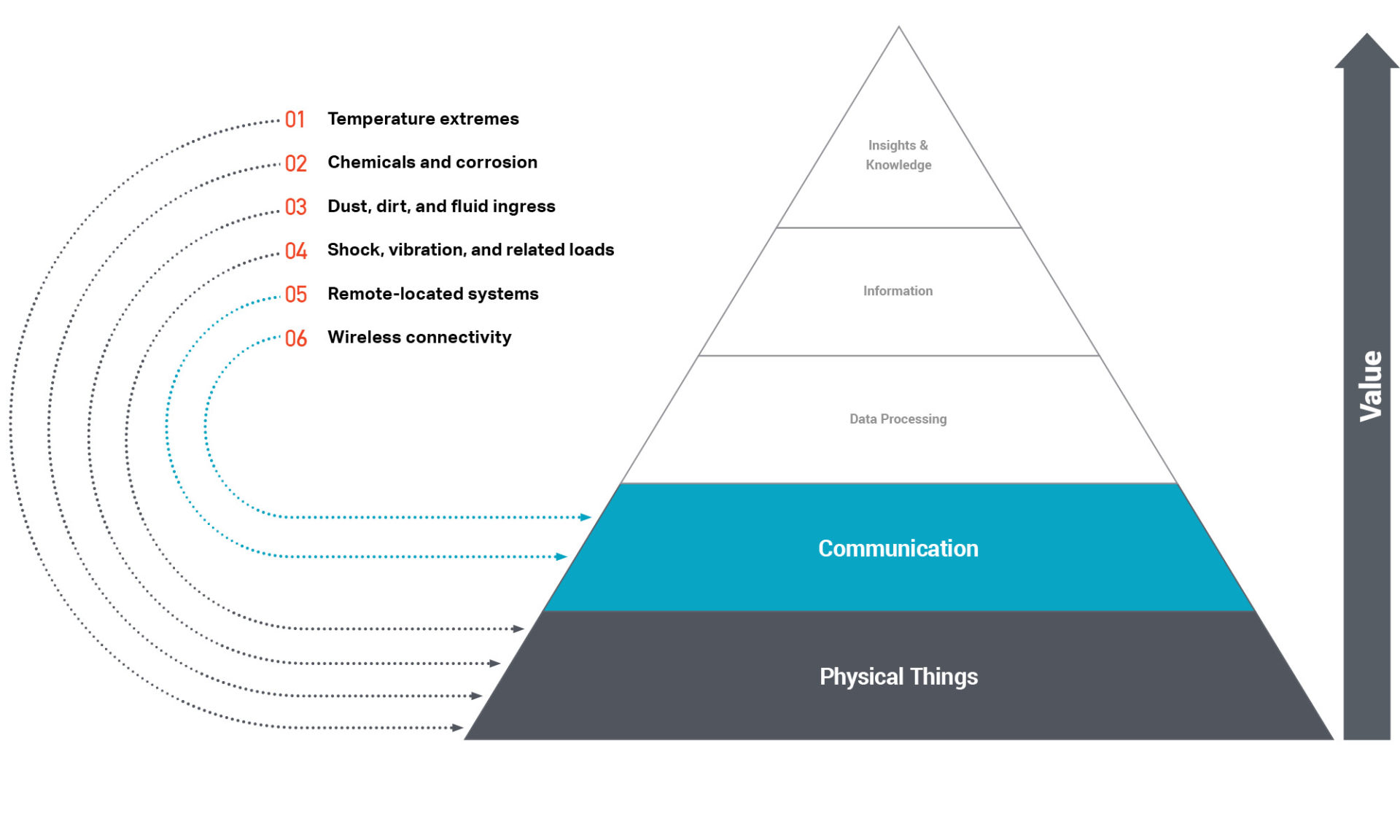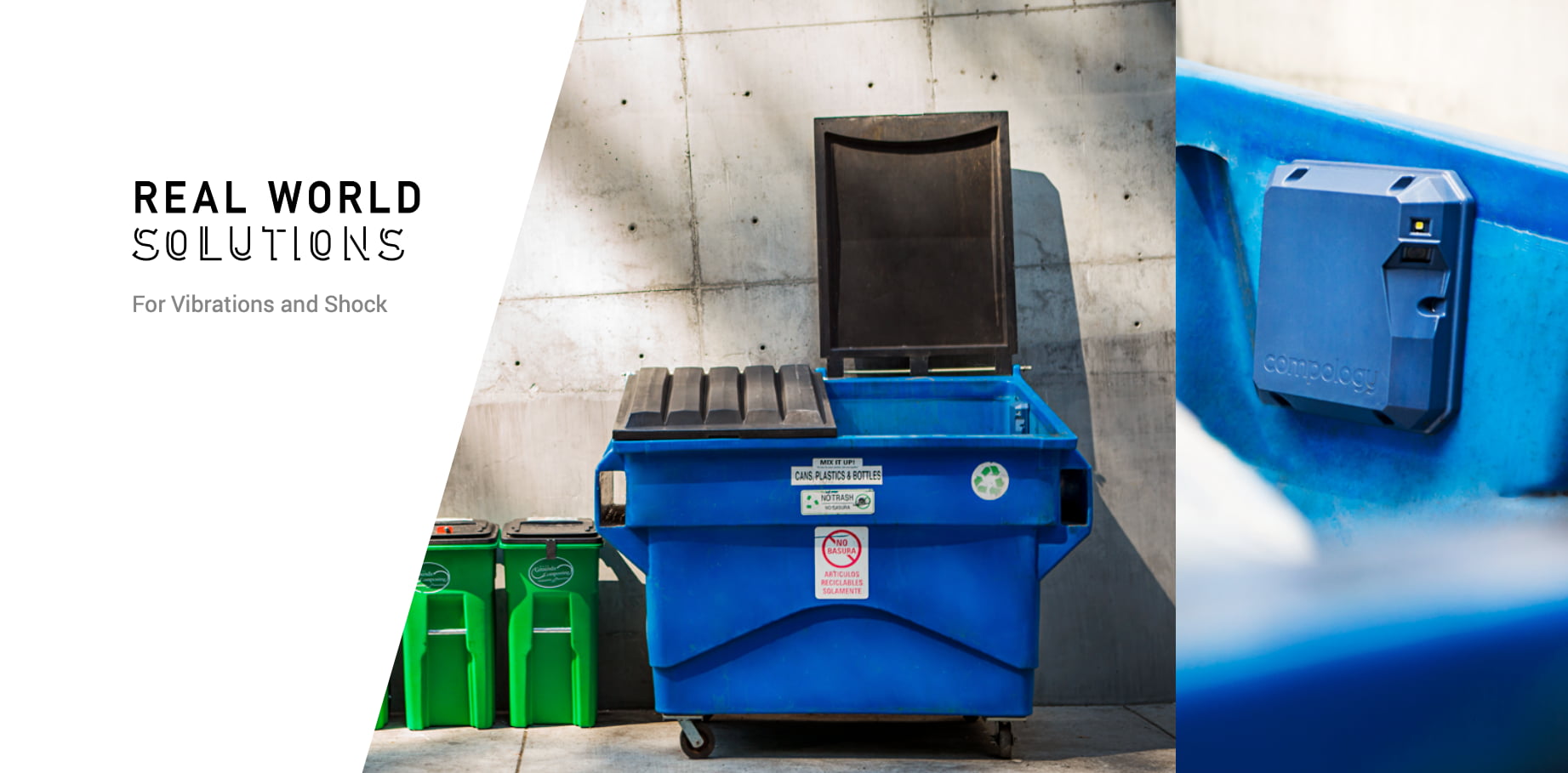Additional contributions to this series made by: Ian Graves, Bret Richmond, & Mike Schaaf

IT’S NOT ALL “GOOD VIBRATIONS”
Movement can create significant loads. Any systems deployed into the field will experience some form of mechanical loading and need to be designed appropriately to ensure data can continue to be captured even when significant mechanical loading is applied.
CONDITIONS
For sensors the most concerning mechanical loading will be vibration and shock. The magnitude of the applied vibration and shock loads should be characterized to allow for effect design. These could originate from the machinery or equipment they are monitoring, or from the expected use case, for example detecting drops or impacts on a system.Ongoing vibration can not only cause immediate damage, but also fatigue components over time. This can result in failures in the field with no increase in applied load, but simply the duration of the applied vibration being too much for the system. Static loads also need to be considered, whether they come from external pressure on the system, or from a structural component to the system with loads it needs to support. In some cases, these loads may even be the parameter the system is trying to measure.
DESIGNING FOR MECHANICAL LOADING
Having appropriately set requirements and characterized the loads a system will experience, design efforts will follow atypical path, dependent upon the type of loading.
1) Vibration Loading
Designs will be analyzed for sensitive components and any resonance modes that could be problematic. Sensitive components can often be isolated, at least partially, from applied vibration with the appropriate addition of compliant connections and components. Damping materials are also particularly effective at ensuring the introduced compliance does not result in just shifting the frequency at which vibrational loads become problematic. Simulation is used where appropriate to identify potentially problematic modes of resonance, which can then be mitigated by changing the design of the component. This mitigation could shift the resonant frequency out of the range of applied vibration by adjusting the stiffness or mass, which avoids the need to add damping. Damping, which is often the go-to solution, can be added but is not the only solution.
2) Shock Loading
Shock loads often come in the form of drops of the system but can be applied externally in challenging environments. The method and direction of the application of shock loading need to be considered in the design, with the components that require protection identified. Typically the design will aim to reduce the peak force or acceleration experienced by the sensitive components. This is most often achieved by adding some compliance, spreading the applied impulse over a longer period. Careful consideration needs to be made as to the relative movement of components, however, as excessive movement could result in damage to interconnects or other interface components.Simulation of drop and shock loads is possible, but much more challenging. Design, prototype, and test iterations are most effective at achieving a robust design.
3) Static Loading
Static loads are typically the most predictable to understand and design for, using simulation and stress calculations to design components appropriately. Particular challenges can come from the time dependence of some material properties, often in combination with temperature. Plastic creep deformation is an example of this and requires particularly careful design to keep the material below its creep limits.
4) Thermal Loading
Temperature cycling can induce loads in components via thermal expansion and contraction. If this thermal cycling is cyclic, it can be concerning over time, especially if it is occurring in combination with other cyclic mechanical loading. This can exacerbate or accelerate fatigue failures in materials. Additionally, thermal expansion may cause the fit and interactions of multiple parts to malfunction. For example, two parts that have been“press-fit” together may no longer have a tight fit at higher temperatures. Thermal expansion needs to be carefully considered in these types of interactions, especially when the parts interacting have different coefficients of thermal expansion.
Note: Material properties of components may change significantly across a wide temperature range. Plastic and metal parts can undergo ductile to brittle transitions that can change how they react under impact or static loading.

DATA COLLECTION TO STREAMLINE GARBAGE COLLECTION
Compology’s in-dumpster monitoring sensor presented enormous design challenges due to the harshness of the environment. Dumpsters can be nasty places. A camera-based sensing device mounted inside a dumpster will be subject to very high temperatures, weather, chemicals, potentially massive impact loads, and a poor RF environment. Not to mention a dumpster gets filled with water and other fluids, and the device had to be tamper-proof! Some of the key challenges for this project were designing and mounting the camera in the housing. To protect the camera from impacts, grime, and weather ingress, it had to be mounted facing downward in a rugged plastic housing to ensure it would live up to continued abuse.
Note: In designing the housing, much higher impact loading needed to be considered than would typically be seen by a consumer IoT product. In a situation like this, adding durability to a housing can be accomplished by swapping from plastic to a metal enclosure, or by changing from an unfilled plastic resin to a filled version. Filled resins include glass, mineral, or carbon fibers that substantially increase the stiffness of the material. For a part that will see substantial abuse during use, this can be a low-cost way to add significant strength without adding cost. A downside of glass-filled resins is that they are often unsightly—the orientation of the fibers is typically very noticeable in the finished part (though this can be mitigated to some extent with texturing). This is often unsuitable for many consumer products, but for amore industrial-focused IoT product, it is often of little concern.

